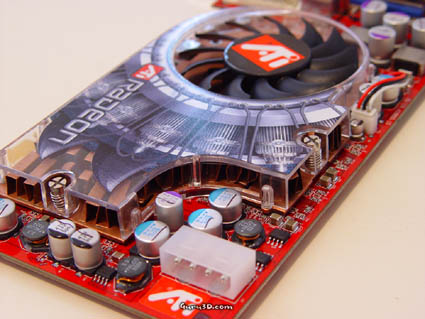Page 4 - Overclocking
Overclocking
Of course, with most videocards we can do some easy tricks to boost the overall performance a little. It's called overclocking the videocard and by increasing the frequency of the videocards memory and gpu, we can make the videocard increase it's calculation clock cycles per second. It sounds hard but it really can be done in less then a few minutes. I always tend to recommend novice users and beginners not to increase that frequency any higher then 5-10% of the core and memory clock. Example: if your card's gpu or memory originally runs at 300 MHz then I suggest you don't increase that frequency any higher than 330 MHz.
More advanced users push that frequency often way higher. Usually when memory starts to show white dots 'snow', you should go down 10 MHz and leave it at that. The core can be somewhat different; usually when you are clocking too hard it'll start to show artifacts, empty polygons or it will even freeze. I recommend that you back down at least 10-15 MHz from the moment you notice an artifact. Look carefully and observe well.
All in all .. do it at your own risk. Overclocking your card too fast or constantly to it's limit might damage your card and it's not covered by your warranty.
You will benefit from overclocking the most with product that is limited or you may called it 'tuned down'. Now then, we know that this graphics core is likely more powerful then what we have seen in the previous benchmarks. Therefore by increasing the memory and core frequency we should be able to witness some higher performance results.
 Will the cooling solution help cooling down the graphics card enough for a nice overclock ?
Will the cooling solution help cooling down the graphics card enough for a nice overclock ?
Overclocking wise the videocard did quite well. Remember, we don't do just one quick test-run to see how far it clocks. No, the overclock is enabled all the way and must return it's results without _any_ crashing or graphics anomalies in _all_ benchmarks properly to be called stable.
Overclocking was a real joy to do with this card and even more easy to accomplish with Rivatuner (download).
Now we have two function to overclock. OverDrive as explained previously and of course the hard way, doing it yourself with the help of a third party overclocking tool

Default Clock speeds of the graphics card
With RivaTuner we got the card up-to 450 MHZ on the core. Memory was the same story, again we where able to run it beyond default 9800XT performance. We got it up-to 2x391 stable, at 782 MHz.
One sidenote here. I saw some reviews on the web with this card with OC results over 470 MHz for the core. These are doubtful results. We tested the card in a normal environment. That means with the PC window door closed and all software that we use for benchmarking has to run in OC'ed mode also. We probably could do a run or two on 470 MHz with 3D Mark, however the results you see here are consistent in all benchmarks and that's 56 single test-runs.
| Test system |
|
Benchmark Software Suite:
|
All tests where made in 32 bit colors in resolutions ranging from 800x600 pixels up-to the Godfather of all gaming resolutions, the 1600x1200 with several performance/quality settings.
